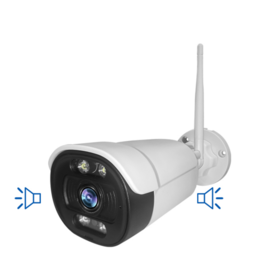A lens has positive additives and traits that in addition decide its capabilities. These consist of the focal duration, the form of aperture and cognizance control, the wavelength of mild or electricity the lens is optimized to transmit, and the picture sensor length the lens is designed for. Additionally, a digital digicam’s decision and the effect of noise in the picture being captured are crucial to the general overall performance of a CCTV system. For installing the cameras as per the request, more information is needed.
Focal Length and Imager Format
The focal duration and length of the picture sensor decide the perspective from which the lens accepts mild to cognizance at the picture sensor. Different lenses of equal focal duration are designed to create a centered picture on sensors of various sizes.

A lens ought to be decided on to fit the layout of the picture sensor so that the picture shaped at the sensor makes use of a maximum of the to-be-had pixels. Lenses are typically advertised for cameras with particular sizes of picture sensors. The digital digicam’s FOV is a characteristic of the lens’s focal duration and the scale of the picture sensor.
Any lens with a focal duration extra than the same old lens is a telephoto lens whilst a lens with a focal duration much less than the same old lens is a wide-perspective lens. Lenses with an equal focal duration on a small-layout digital digicam will produce a telephoto-like picture, however, produce a much broader picture on a large-layout digital digicam. A 12-millimeter lens may be designed for the following:
- ½-inch picture layout digital digicam and could produce a general picture;
- ⅓-inch picture layout digital digicam and could produce a telephoto-like picture; and
- ⅔-inch picture layout digital digicam and could produce a wide-perspective picture.
A lens constructed for large-layout cameras can be usable on a few small-layout cameras; however, the opposite isn’t always real as corners and edges of the picture will seem darker. For example, a lens designed for a ½-inch sensor can paint on a digital digicam with a ⅓-inch sensor, however now no longer the opposite. It is fine to apply a lens designed for the scale of the picture sensor withinside the digital digicam.
Iris and Aperture
The iris guarantees the highest quality quantity of mild reaches the picture sensor via the aperture, presenting the fine picture possible. This is crucial to the most reliable picture viewing. If an excessive amount of mild hits the picture sensor, the picture will seem washed out. Too little mild will bring about a darkish picture wherein the handiest the brightest gadgets withinside the FOV are visible. The wide variety that shows a lens’s aperture placing is the ratio of the lens’s focal duration to the diameter of the aperture.
CMOS Sensors
Applications requiring splendid photos have a tendency to depend upon CCD sensors, however, CMOS sensors are generally utilized in programs along with community cameras, PC peripherals, and smartphones. This is an end result of CMOS sensors that use much less energy than CCDs and are much less high-priced to manufacture. Unlike CCD sensors, CMOS sensors cope with every pixel individually. They procedure the fee from every pixel at the sensor and transmit a virtual little bit of facts. This method reduces the want for added processing alongside the transmission pathway. CMOS sensors use much less energy than CCDs due to the fact a bigger vicinity of the chip is dedicated to processing circuits.

